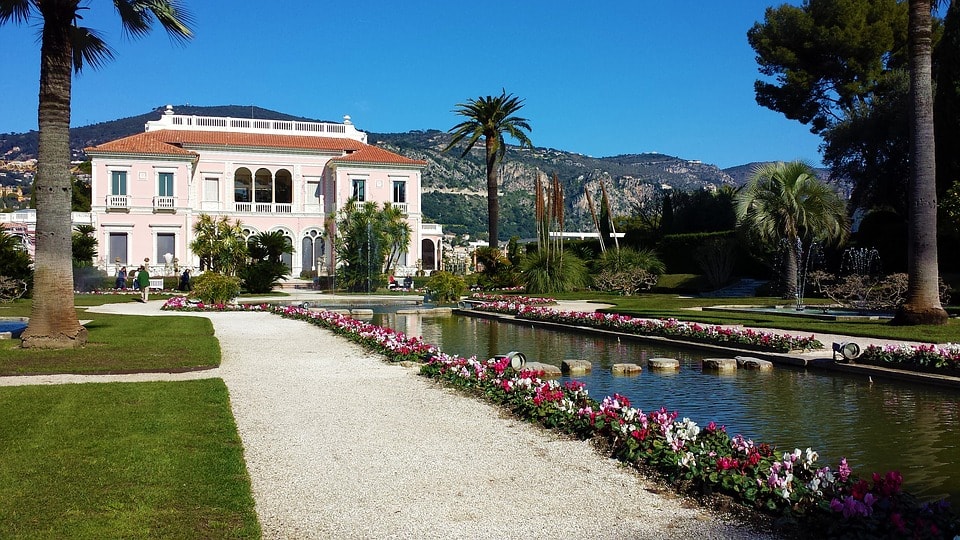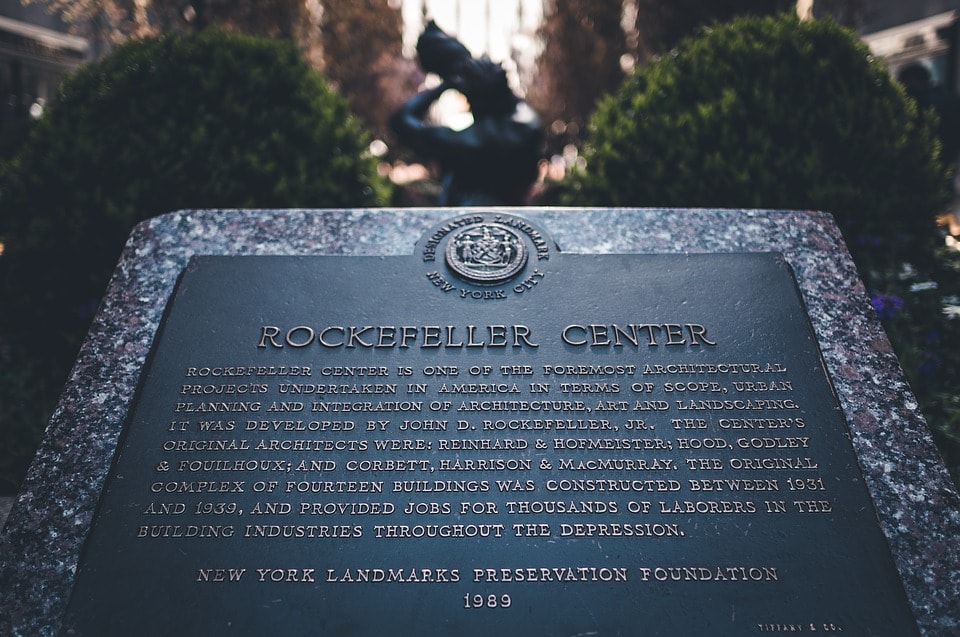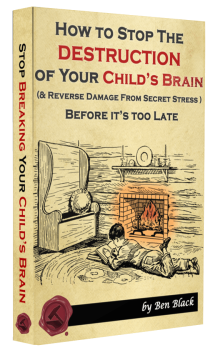
Americans say “Shirtsleeves to shirtsleeves”, The Irish say “Clogs to clogs”, The Japanese say “Rice paddies to rice paddies”. All of these proverbs end with “in three generations.”. The Scottish summarize this the best: The father buys, the son builds, the grandchild sells, and his son begs. There’s a good reason for this. Most families fail to hold onto any semblance of wealth for more than 3 generations. This is more than a coincidence. It occurs because family founders don’t focus on the 4 types of capital in the correct order.
Before we dive into how to break the cycle, let’s break down this all too familiar sequence.
A Familiar Sequence
Generation 1
What usually happens is a family starts from poverty at Gen 1. The impoverished progenitors come from hardship and aim to make life better for themselves and their children. These folks work incredibly hard. This typically entails low-end, blue-collar work. Over time, they pull themselves from the depths of poverty. They use this elevation to send their gen-2 children to college, or fund businesses. They could apply aspects of The Collective method here, but instead ignore human capital and put too much focus on financial capital.
Generation 2
These gen-2 children achieve an elevated status, and money comes a little easier and in greater amounts, but the essence of hard work hasn’t been lost on them. They saw their parents struggle and have the conscience to be conservative, frugal and build wealth. Over time they build relatively significant assets. But because the culture wasn’t built in gen-1 they spread the lack of it onto children of their own, Gen-3.
Generation 3
Gen-3 have it a lot easier. They have not seen the struggle of hard times form their grandparents. They have grown up in relative luxury. Gen-3 want the good life, and that requires cash. In order to realize this cash in an easy fashion, means liquidation of Gen-2’s assets. No real hard-work or struggle required. Often times, Gen-3 has little understanding of how to build this wealth, nor how to maintain it. Their predecessors assets are typically sold at a deflated value over time to realize quick cash. This cash is used by the boatload for fund lifestyle. With little foresight for the future, depleting the family coffers. This has more than one implication. Not only are the financial coffers depleted, but the cultural and moral coffers are too. Their children after them are Gen-4, the final generation in our allegory.
Generation 4
Gen-4 suffer from their parent’s mistakes. With little left in the family coffers, Gen-4 resorts to what people with nothing often do – begging. Hopefully, they or their children will be born with the work ethic and attempt building from the ground up. Maybe this time, it will be different.
Breaking the Cycle
There is a reason that a proverb summarizing this enigma exists in every culture. It is such a common occurrence that it demands an allegory. So what does it take to break the cycle of Clogs-to-clogs? More than wealth, family money requires a rich culture, and foresight to instill this in your children. It takes a shift in mentality to maintain a rich heritage that respects and follows the cultures and customs of their predecessors and passing these traditions and mentalities onto their descendants.
In order for you to do this yourself will require a lot of work and immense study. Reading books like Family Fortunes(Review Here | Buy the Book Here) and Brain Rules For Baby(Review to come | Buy the Book Here) will help in giving you the skills to build your family culture.
I’m oversimplifying here but you’ll also need to start by building your wealth and family culture. Other than reading books, you can start cutting living expenses. Having a garden or keeping livestock like chickens teaches children the essence of work and where their food comes from. Making moves to shave bills by doing things like swapping for LED bulbs will leave more left to invest as well.
It also takes handing over your hard earned estate rather than spending it all before you pass on. It’s about preparing your children to receive the money, not preparing the money for your children. This allows for accumulation in family assets.
This can mean having your children take care of you as you get older to prevent retirement homes dwindling the last of what you have. Before retirement homes became the norm, peoples ‘retirement’ plan was having children that loved them. Multi-generational living was and still is perfectly natural, in families that have the cultural compatibility to handle it.
The compounding effect of intergenerational living will leave more for your children and instill a sense of frugality and keep the appreciative work ethic alive in future generations.
Examples of Successful Families
There and a fair few families that have broken the mold. There is a family in Japan that has run the same hotel for 1200 years. On a smaller level, family legacies are built too, such as with farms that are handed from father to son.
Love it or hate it, Nepotism plays a huge role in society and always have. Political dynasties exist too such as the Bushes and Clintons, though I don’t like to mention or credit their disgusting methods, or illegitimate gains as much as others may. On a more distant note, Gaius Julias Ceasar only rose to the heights he did thanks in large part to his father, who set him up socially and educationally.
Below are some examples of families that have broken the ‘clogs to clogs’ 3-generation mold and have become household names.
The Walton Family
An American Family, the collective wealth of the Waltons makes them among the wealthiest in the entire world. A lot of their wealth originated from the Elder Waltons, Sam, and Bud. These were the brothers that founded Walmart. The Walton Family now consists of dozens of members thanks to a healthy, lasting dynasty. All up, the family owns 50.0% of the Walmart company.
Currently, on the 3rd generation, their collective wealth is approximated at 170 Billion USD(2018). This is thanks in part to keeping unity and the business their forefathers built under family control.
An up-cycled old Walmart Store. Photo Credit: Random Retail on Flickr
Rothschild
A lot of controversy and conspiracy surrounds the Rothschild Dynasty. The Rothschild Legacy started from one man, Mayor Rothschild, who was a court Jew for a Roman State in the 18th century. A court Jew had privileges over other Jews of the time, mainly in part that they were able to handle large amounts of money.
Aiming not to squander this opportunity, Mayor built a banking business. By employing clever tactics that are questionable through a modern lens he managed to bequeath his wealth to his five sons. These sons continue in the family business and went on to set up banks in five separate countries, financed by their father. This prestigious wealth elevated them socially and they achieved noble status in the 19th century.
The wealth was divided among the descendants as the family grew. Today, the Rothschild empire covers a large range not limited to banking and financial services but also covering real estate, mining, farming, energy, winemaking(this one is big at the moment) and nonprofits.
Whether you believe the conspiracies of them being the puppet masters of the world or not, you can’t deny that thanks to Mayor setting up am intense and rich family culture, they have achieved power over and above what most families do, and have broken the 3 generation cycle.
Their family motto is: “Concordia, Integritas, Industria” Which is Latin for “Harmony, Integrity, Industry”

A Gorgeous Estate Owned by the Rothschild Family
Rockefeller
Founded by Oil Tycoons John D. Rockefeller and his Brother William, the Rockefeller family is a dynasty that lives on to this day. The Rockefellers are considered to be one of, if not the, most powerful family in US history.
Other than Oil, the family has control of Chase Manhatten Bank, their most powerful asset. Other assets include insurance companies, financial services, Venture Capital and Real Estate(a lot of it!). There is also quite a bit of involvement in politics as well, which a lot of people find questionable.
Today, much of the wealth built by the forefathers is tied up in a family trust, which is unlocked with the death of the fourth generation. It will be interesting to see what happens to the family when access to this huge pool of finance is given to the 5th generation.

One of the many properties built by the Rockefellers
Commonalities
The Waltons and Rockefellers, the ‘youngest’ of the above three, have an interesting commonality. It was two brothers who founded the family empire(though one brother had more of a leading hand than the other). This is the same with The Bonner Brothers, the authors of the book Family Fortunes (Review | Affiliate Link) who are also setting their family up for success, from scratch. Just an interesting side note.
All of these families have built Dynastic Land holdings up in one way or another as well. This is significantly true in most dynasties. Something any aspiring dynasty should strive toward.
What about yours?
There’s a reason proverbs like Clogs to Clogs exist in every culture. Its tough to break through the barrier and achieve dynastic success. But studying successful families and being fully aware of the mistakes of the many is a great start to breaking through hardship and taking care of generations to come.
Do you want to try and break the clogs to clog cycle and build intergenerational wealth for your own family? We’re all about that here at Dynastus. You can follow us on Twitter for the latest, and read more of our content by clicking here or scrolling down.







